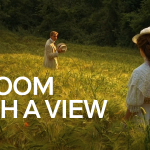𝘽𝙚𝙖𝙨𝙩𝙨 𝙤𝙛 𝙉𝙤 𝙉𝙖𝙩𝙞𝙤𝙣 (𝟮𝟬𝟭𝟱)

Beasts of No Nation | Official Trailer [HD] | Netflix
Beasts of No Nation, directed by Cary Joji Fukunaga and released in 2015, is a powerful and harrowing film that sheds light on the brutal realities of war and child soldiers in Africa. Based on the novel by Uzodinma Iweala, the film follows the journey of a young boy named Agu, played by Abraham Attah, who is thrust into the violent world of armed conflict as his homeland is ravaged by civil war. Through its poignant storytelling and stunning cinematography, the film explores the loss of innocence, the impact of violence, and the struggle for survival in a landscape marked by chaos.

The film opens with Agu living a carefree life in his village, where he enjoys the simple pleasures of childhood. However, this idyllic existence is shattered when war breaks out, forcing Agu to flee as his family is torn apart. As he navigates the horrors of conflict, Agu encounters a group of rebels led by the charismatic yet terrifying Commandant, played by Idris Elba. The Commandant becomes both a mentor and a tyrant, guiding Agu into the world of warfare while simultaneously exploiting his vulnerability. This relationship captures the complex dynamics between power, manipulation, and the loss of agency experienced by child soldiers.
One of the film’s most striking elements is its unflinching portrayal of violence and trauma. Fukunaga does not shy away from depicting the brutal realities faced by children in war, showcasing the physical and psychological toll of violence. The film’s graphic depictions of combat and the harsh conditions endured by Agu and his comrades serve to immerse viewers in the harrowing experience of war. This raw honesty forces the audience to confront the devastating consequences of conflict and the moral complexities surrounding child soldiers.

The cinematography of Beasts of No Nation is both breathtaking and haunting. Shot on location in Ghana, the film captures the stark beauty of the African landscape, contrasting it with the horrific events that unfold. The visual storytelling enhances the emotional weight of Agu’s journey, illustrating how nature can be both a refuge and a witness to the atrocities of war. The use of close-ups and intimate framing allows viewers to connect deeply with Agu’s character, amplifying the sense of loss and despair that permeates the film.
In addition to its exploration of war, the film raises important questions about humanity and survival. Agu’s journey is one of transformation, as he grapples with his sense of self in the face of overwhelming adversity. The film challenges viewers to reflect on the impact of violence on identity and the struggle to retain one’s humanity amidst dehumanizing circumstances. Agu’s resilience serves as a testament to the strength of the human spirit, even in the darkest of times.
In conclusion, Beasts of No Nation is a powerful and thought-provoking film that exposes the brutal realities of war and the plight of child soldiers. Through its unflinching portrayal of violence, stunning cinematography, and poignant storytelling, the film invites viewers to confront the moral complexities of conflict and the resilience of the human spirit. It serves as a poignant reminder of the impact of war on the most vulnerable members of society and the urgent need for awareness and action in addressing these critical issues.











